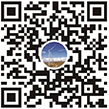Laboratory Tests on the Rock Breaking Effects of Plasma Torch and Suggestions for Field Application
-
摘要:
油气资源和深层地热能开发钻井过程中会遇到岩石硬度大、可钻性差等问题,采用传统钻井技术难以提高钻井效率。针对这一问题,分析了等离子炬的破岩原理,认为等离子炬破岩主要有岩石破碎、熔化和蒸发等方式;利用不同厚度的玄武岩和花岗岩岩样,进行了等离子炬破岩效果室内试验,证明等离子炬可以烧穿50 mm厚的玄武岩岩样和30 mm厚的花岗岩岩样,但不能烧穿更厚的岩样。结合试验结果,分析了现场应用等离子炬钻井技术存在的问题,提出了研发建议。研究结果为深层硬地层等离子炬钻井技术的研究与应用提供了技术借鉴。
Abstract:During the development and drilling of oil and gas resources and deep geothermal energy, many problems such as extremely high rock hardness and poor drillability may be encountered, and it is difficult to improve drilling efficiency by traditional drilling techniques. To solve this problem, the principle underlying rock breaking by plasma torch were analyzed. On the basis of it, rock spallation, melting, and evaporation were found to be the main methods for rock breaking. Laboratory tests were carried out to determine the effect of using plasma torch for breaking basalt samples and granite samples with different thicknesses. It was demonstrated that plasma torch can burn through 50 mm thick basalt sample and 30 mm thick granite sample, but could not burn through thicker rock samples. Combined with the test results, the problems existing in the field application of plasma torch drilling technology were analyzed, and research and development suggestions were thereby advanced. The results of this study can provide reference for the research and application of plasma torch drilling in deep hard formations.
-
Keywords:
- plasma torch /
- rock breaking /
- laboratory test /
- high temperature jet /
- suggestions on application
-
随着油气开发不断深入和深层地热能开采需求不断增加,钻井作业面临日益复杂的地质条件。地层越深,岩石硬度越大,温度和压力越高,岩石破碎的难度也越大。深井、超深井采用传统钻井技术钻进时,机械钻速低、钻头磨损严重等问题突出,导致钻井周期长、钻井成本高,甚至无法实现钻井目的。而且,受各种因素影响,传统钻井技术进一步发展和提升的空间有限。因此,各种创新型能量钻井技术不断被提出。
截至目前,已提出了多种创新型能量钻井技术,其中等离子炬钻井是一种较有应用前途的新型钻井方式。等离子炬具有功率密度高、连续可调、温度高和设备简单等优点,已经广泛应用于冶金、机械加工切割、喷涂和固废处理等领域[1-6]。近年来,国内外开始尝试将等离子技术应用于石油工程[7-8],进行了等离子炬破岩以及切割套管的研究,如I.Kocis等人[9]研发了用于硬岩钻井的等离子炬,并完成钻井样机开发,开展了地面钻井测试。但是,国内还没有将等离子炬应用于钻井的研究。为此,笔者分析了等离子炬的破岩原理,进行了等离子炬破岩效果室内试验,证明等离子炬在地面具备破碎岩石能力之后,提出了现场应用建议,以期为该技术的应用研究提供借鉴。
1. 等离子炬破岩原理
等离子体是一种由自由电子和带电离子为主要成分的物质形态,广泛存在于宇宙中,常被视为物质的第四态,称为等离子态或者超气态,也称电浆体。等离子炬是一种等离子体的发生装置,其工作原理如图1所示:工质气体在阴阳极之间被击穿形成稳定的电弧等离子体,并释放大量的热量,工质气体受热膨胀后从阳极喷嘴喷出,形成火炬状的高温等离子体射流。
等离子炬破岩是用高温等离子体射流冲击岩石,使岩石受热后脆裂、熔化或蒸发[10-11]。
等离子炬破岩的一种形式是利用高温射流使岩石脆裂,其温度场如图2所示。等离子炬产生的高温射流的中心温度可达8 000 ℃以上,高温射流喷射到岩石表面,直接将温度传递给岩石。由于岩石的导热性很差,高温等离子体使岩石表面层具有很大的温度梯度,产生很大的热应力,出现热冲击现象[12],岩石产生的热应力超过岩石强度极限时岩石破碎。
等离子炬破岩的另一种形式是通过高温使岩石熔化,岩石熔化后温度继续升高甚至蒸发,达到破岩效果。钻进中产生的高温热能使井底岩石熔化,并被等离子体射流挤到井壁上,然后逐渐冷却,形成致密的玻璃层。在只考虑岩石熔化的情况下,岩石的熔化速度即为钻进速度。利用岩石的熔化比能和吸收等离子炬的功率密度可求得钻进速度:
v=Pde (1) 式中:
v 为钻进速度,cm/s;Pd 为功率密度,kW/cm2;e为熔化比能,kJ/cm3。由式(1)可知,等离子炬破岩速度和岩石硬度无关。因此,相对于传统钻井,等离子炬在破碎硬岩时更具有优势。笔者选用硬岩中的玄武岩和花岗岩进行等离子炬破岩试验,测试不同种类硬岩的破碎效果,其熔化、蒸发所需要的能量见表1。
表 1 岩石熔化和蒸发所需要的能量Table 1. Energy required for rock melting and evaporation岩石 熔化温度/℃ 蒸发温度/℃ 熔化比能/
(kJ·cm−3)蒸发比能/
(kJ·cm−3)花岗岩 1 215~1 260 2 960~3 230 4.3~4.4 25.7~28.4 玄武岩 984~1 260 2 960~3 230 4.0~4.8 24.7~27.5 根据等离子炬的功率和热能转换效率,以及等离子炬射流与岩石接触的面积,可以得到作用于岩石表面的功率密度,从而可以计算出理想状态下熔化岩石的钻进速度。 如果需要提高钻进速度,只需提高等离子炬的功率,增大功率密度。
综合以上分析,可知等离子炬破岩的特点:通过高温射流,使岩石碎裂、熔化和少部分蒸发;与传统钻井相比,等离子炬钻井不需要钻头接触岩石表面,钻进速度和岩石的硬度无关;钻进中钻头不会产生机械磨损;提高等离子炬的功率,即可加快岩石的熔化,从而提高钻井速度。
2. 等离子炬破岩试验
为了验证等离子炬对岩石的作用效果,在实验室内进行了等离子炬破碎花岗岩和玄武岩的试验。通过改变岩样厚度、等离子炬功率等参数,对破岩过程及效果进行比较分析,确定不同岩样在不同参数下的破岩差异。
2.1 试验方案及结果
2.1.1 试验方案
分别用玄武岩岩样和花岗岩岩样进行等离子炬破岩试验。试验时,等离子炬可以使用氩气、空气和水蒸气等气体作为工质,功率在10~50 kW连续可调。
将等离子炬固定在破岩试验装置平台上,岩样固定在移动支架上,岩样中心与等离子炬喷口中心对齐;移动支架可以在等离子炬中心轴线方向移动,精确调整岩样和等离子炬的位置;启动等离子炬后,移动岩样到合适的位置,进行等离子炬破岩测试(见图3)。
2.1.2 玄武岩试验及结果
用玄武岩岩样进行等离子炬破岩试验时,等离子炬起弧后,移动支架将岩样从远离等离子炬的位置逐渐向等离子炬方向移动。岩样移动过程中,等离子炬射流喷射到岩样表面,玄武岩岩样受热熔化,形成大量玻璃体。随着岩样和等离子炬之间的距离变短,岩样接收的热量增多,表面温度升高,射流烧出的孔变大。试验中,岩样的破碎主要由等离子炬的高温熔化所致,有少量岩石碎裂,等离子炬喷口距离岩样很近时可观察到有少量的岩石蒸发。
试验发现,等离子炬在空气工质、功率30 kW下可以烧穿厚度50 mm的玄武岩岩样,但因为岩石熔化后的成孔面积不够大,等离子炬本体无法穿过玄武岩岩样,且高温射流长度不够,试验时未能烧穿厚度100 mm的玄武岩岩样。将等离子炬功率由30 kW升至50 kW再次进行试验,破岩速度明显加快,破岩成孔面积也有所增大,但仍未烧穿厚度100 mm的玄武岩岩样。等离子炬对玄武岩岩样的破岩效果如图4所示。
2.1.3 花岗岩试验及结果
用花岗岩岩样进行等离子炬破岩试验时,以空气为等离子炬的工质,用不同功率对厚度30和100 mm的花岗岩岩样进行破岩试验。
试验发现,等离子炬可以烧穿厚度30 mm的花岗岩样品,但同样不能烧穿厚度100 mm的花岗岩岩样。随着等离子炬功率增大,岩石破碎速度加快,且成孔面积增大,再次验证了增大等离子炬功率可以提高破岩速率。试验还发现,破岩过程中花岗岩主要是碎裂方式,岩石熔化成玻璃态的较少。破岩过程中,岩石破裂严重,有大量岩屑飞出。花岗岩破岩成孔圆度、光滑度都不如玄武岩,但等离子炬对花岗岩岩样的整体破坏程度较高。等离子炬对花岗岩岩样的破岩效果如图5所示。
2.2 试验结果分析
玄武岩的主要成分为SiO2,天然玄武岩为各矿物相的混合晶体,经1 500 ℃高温熔融后晶体消失,变为非晶体玻璃态,也就是发生了熔化。花岗岩是由石英、云母和长石形成的复杂混合物,矿物质晶体和存在形式不同,高温加热后,不同矿物的热膨胀系数和力学性能差距较大,更容易发生碎裂。
在不考虑破岩过程中岩石碎屑飞溅、只考虑岩石熔化的情况下,烧穿岩石时,岩样前后两面(正对等离子炬喷口射流的一面为前面)成孔的面积相差不是很大,可以根据成孔直径和岩石厚度计算熔化岩石的体积,根据岩石的熔化比能计算所需要的能量,然后根据等离子炬的功率和烧穿时间计算等离子炬消耗的能量,从而得到破岩时的热能效率,其表达式为:
η=VePt (2) 式中:η为破岩时的热能效率;V为等离子炬熔化岩石的体积,cm3;P为等离子炬的功率,kW;t为等离子炬灼烧岩石时间,s。
利用式(2)可以计算出上述试验的热能效率,相关数据见表2(因100 mm厚的岩样没有烧穿,等离子炬的破岩时间无法测量,未计算相应的热能效率)。
表 2 等离子炬破岩试验数据及计算的热能效率Table 2. Test data of rock breaking by plasma torch and calculated thermal energy efficiency岩样 孔径/mm 孔深/mm 烧穿时间/s 热能效率,% 30 kW 50 kW 30 kW 50 kW 30 kW 50 kW 30 kW 50 kW 50 mm厚玄武岩 39 43 50 50 140 112 6.2 5.7 100 mm厚玄武岩 56 58 63 74 30 mm厚花岗岩 34 36 30 30 103 68 3.8 3.9 100 mm厚花岗岩 53 68 51 59 由表2可知:玄武岩在等离子炬功率分别为30和50 kW时,热能效率分别为6.2%和5.7%;花岗岩在等离子炬功率分别为30和50 kW时,热能效率分别为3.8%和3.9%,热能效率都不高。对热能效率偏低的原因进行了分析,分析认为:1)等离子炬的能量有一部分被冷却水带走,由等离子炬喷口喷出的射流热效率大约80%;2)岩石熔化过程中,熔化的岩浆有一小部分蒸发,岩石的蒸发比能远大于熔化比能,需要吸收更多的能量;3)试验开始时岩样距离等离子炬较远,等离子炬启动后才逐渐向其移动,直至被高温射流喷射到,移动过程中大量的能量没有作用到岩样上,且较长时间处于温度相对较低射流区,导致热能效率降低;4)等离子炬的射流只在正面喷射到岩石上,且井孔为非密闭空间,射流和周围的空气接触,被空气带走大量热量,同时岩样也向环境散发了大量热量,这也是导致热能效率偏低的一大原因。
等离子炬破岩试验结果表明,玄武岩对热量的吸收效率更高,岩石熔化更容易;花岗岩的熔化较慢,但在破岩过程中岩样产生了大量的裂缝,岩石在熔化的同时部分产生破裂。等离子炬在破岩过程中,随着等离子炬功率增大,成孔变大,破岩时间变短,但受到试验装置的制约,大量能量没有直接作用在岩石上,效率较低。在持续钻井的施工条件下,效率将大幅度提高。
3. 应用建议
等离子炬将大量的电能转换为热能,运行时需要气体工质和冷却液,这使得在未来的钻井应用中会出现能量传输、工质和冷却液传输等问题。另外,试验时等离子炬破岩成孔并不规则,钻井时需要提高成孔质量。对此,进行了分析探讨,提出了应用建议。
3.1 能量传输
等离子炬破岩需要的功率达到几十甚至上百千瓦,且功率越大,需要的电流越大。如果将供电系统设置在地面,可以采用连续油管的方式输送动力电缆,但会受到钻井深度、水平段钻进距离的限制,存在可靠性方面的问题等。需要研发特制的钻杆,将传输电缆集成在钻杆内来输送电能,但钻杆的研发成本较高。如果将电源设置在井下,需要将供电系统集成在井下钻铤中,通过大功率井下发电机提供电能,而置于深井里的一切控制元件都要考虑抗高温高压性能,研发难度较大。
建议加快钻井专用等离子炬的研发,提高破岩的能量效率,降低破岩的电能需求,从而降低特制钻杆和井下发电机的研发难度。
3.2 气体工质和冷却液传输
等离子炬工作时,需要在电极间通入气体工质将高温射流从阳极喷出,随着钻井深度增加,井底压力不断上升,需要气体工质的压力不断增大,对气体工质的供给和传输都提出了很高的要求。另外,等离子炬需要循环水对电极进行冷却,在钻井时要增加冷却液的传输。
因此,建议研发特制钻杆,来实现气体工质和冷却液的传输。
3.3 成孔质量
等离子炬钻井主要利用电弧放电产生的高温等离子体射流破岩,通过控制电功率和等离子炬与岩石的距离,使用合理的射流温度区域来熔融破碎岩石,通过工质气体的旋转来控制射流形态,保证钻井成孔的质量。但在实际钻井过程中,由于地层深处存在多种不确定因素,很难精确控制井下等离子炬的功率、射流长度、射流与岩石距离等参数,必然会影响射流的形态,对钻井成孔的质量造成影响。
因此,建议加强对等离子炬钻井过程的模拟研究,并开展井下钻井环境模拟试验,优化施工参数,提高成孔质量。
4. 结 论
1)等离子炬可以通过高温射流进行破岩,不同类型岩石的矿物组成不同,破碎形式也不同,主要破岩方式为岩石破碎和熔化。受热相同情况下,花岗岩比玄武岩更容易发生破碎。
2)等离子炬功率越大,作用于岩石单位表面积上的热量越大,破岩速度越快。破岩试验中,因为与环境有大量热交换,破岩效率不够高。
3)建议加大等离子炬钻井的研究力度,探索更合适的等离子炬破岩参数,提高等离子炬破岩效率;建议研发钻井专用的等离子炬,解决能量传输、工质及冷却液传输等问题,以更快地实现等离子炬在钻井工程中的应用。
-
表 1 岩石熔化和蒸发所需要的能量
Table 1 Energy required for rock melting and evaporation
岩石 熔化温度/℃ 蒸发温度/℃ 熔化比能/
(kJ·cm−3)蒸发比能/
(kJ·cm−3)花岗岩 1 215~1 260 2 960~3 230 4.3~4.4 25.7~28.4 玄武岩 984~1 260 2 960~3 230 4.0~4.8 24.7~27.5 表 2 等离子炬破岩试验数据及计算的热能效率
Table 2 Test data of rock breaking by plasma torch and calculated thermal energy efficiency
岩样 孔径/mm 孔深/mm 烧穿时间/s 热能效率,% 30 kW 50 kW 30 kW 50 kW 30 kW 50 kW 30 kW 50 kW 50 mm厚玄武岩 39 43 50 50 140 112 6.2 5.7 100 mm厚玄武岩 56 58 63 74 30 mm厚花岗岩 34 36 30 30 103 68 3.8 3.9 100 mm厚花岗岩 53 68 51 59 -
[1] 万树德,汪海. 电弧等离子体冶金技术的实际应用[J]. 材料与冶金学报,2013,12(2):81–88. WAN Shude, WANG Hai. Application of arc plasma metallurgy technology[J]. Journal of Materials and Metallurgy, 2013, 12(2): 81–88.
[2] ONO K, LIU Zhongjie, ERA T, et al. Development of a plasma MIG welding system for aluminium[J]. Welding International, 2009, 23(11): 805–809. doi: 10.1080/09507110902836945
[3] 陈明,李琴. 等离子切割工艺在电站锅炉施工中的应用[J]. 电力建设,2014,35(2):120–124. doi: 10.3969/j.issn.1000-7229.2014.02.024 CHEN Ming, LI Qin. Application of plasma cutting process in power plant boiler construction[J]. Electric Power Construction, 2014, 35(2): 120–124. doi: 10.3969/j.issn.1000-7229.2014.02.024
[4] 邓春明,周克崧,刘敏,等. 低压等离子喷涂氧化铝涂层的特性[J]. 无机材料学报,2009,24(1):117–121. doi: 10.3724/SP.J.1077.2009.00117 DENG Chunming, ZHOU Kesong, LIU Min, et al. Characteristics of low pressure plasma sprayed alumina coating[J]. Journal of Inorganic Materials, 2009, 24(1): 117–121. doi: 10.3724/SP.J.1077.2009.00117
[5] 孙成伟,沈洁,任雪梅,等. 等离子气化技术用于固体废物处理的研究进展[J]. 物理学报,2021,70(9):095210. doi: 10.7498/aps.70.20201676 SUN Chengwei, SHEN Jie, REN Xuemei, et al. Research progress of plasma gasification technology for solid waste treatment[J]. Acta Physica Sinica, 2021, 70(9): 095210. doi: 10.7498/aps.70.20201676
[6] 张璐,严建华,杜长明,等. 热等离子体熔融固化模拟医疗废物的研究[J]. 环境科学,2012,33(6):2104–2109. ZHANG Lu, YAN Jianhua, DU Changming, et al. Study on vitrification of simulated medical wastes by thermal plasma[J]. Environmental Science, 2012, 33(6): 2104–2109.
[7] TIMOSHKIN I V, MACKERSIE J W, MACGREGOR S J. Plasma channel microhole drilling technology[C]//Digest of Technical Papers. PPC-2003. 14th IEEE International Pulsed Power Conference (IEEE Cat. No. 03CH37472), Dallas: IEEE, 2003: 1336-1339.
[8] 张金龙,郭先敏,蔡西茂,等. 等离子通道钻井技术[J]. 石油钻探技术,2013,41(4):64–68. doi: 10.3969/j.issn.1001-0890.2013.04.014 ZHANG Jinlong, GUO Xianmin, CAI Ximao, et al. Plasma channel drilling technology[J]. Petroleum Drilling Techniques, 2013, 41(4): 64–68. doi: 10.3969/j.issn.1001-0890.2013.04.014
[9] KOCIS I, KRISTOFIC T, GAJDOS M, et al. Utilization of electrical plasma for hard rock drilling and casing milling[R]. SPE 173016, 2015.
[10] KOCIS I, KOCIS I, KRISTOFIC T, et al. Method of disintegrating rock by melting and by synergism of water streams: US 2015/0047901 A1[P]. 2015-02-19.
[11] MACGREGOR S J, TURNBULL S M. Plasma channel drilling process: US7270195 B2[P]. 2007-09-18.
[12] 陈世和,麻胜荣,邹文洁. 等离子技术在矿山中的应用[J]. 铀矿冶,2006,25(4):173–176. doi: 10.3969/j.issn.1000-8063.2006.04.002 CHEN Shihe, MA Shengrong, ZOU Wenjie. Application of plasma technology in mines[J]. Uranium Mining and Metallurgy, 2006, 25(4): 173–176. doi: 10.3969/j.issn.1000-8063.2006.04.002
-
期刊类型引用(3)
1. 沈德来,刘鑫,李相颖,袁比飞,屈文涛. 井下节流器用可溶性卡瓦下座耐腐蚀性能研究. 石油工业技术监督. 2024(03): 1-6 .  百度学术
百度学术
2. 柳洁,沈德来,严锐锋,邓伟,屈文涛. 卡瓦下座用表面改性可溶性镁合金耐腐蚀性能研究. 石油钻探技术. 2024(03): 118-126 .  本站查看
本站查看
3. 孙艳萍,赵勇,王维,赵朕浩,沈德来,屈文涛. 56排水型可溶节流器的研制与应用. 石油机械. 2024(12): 81-88 .  百度学术
百度学术
其他类型引用(2)




 下载:
下载:














